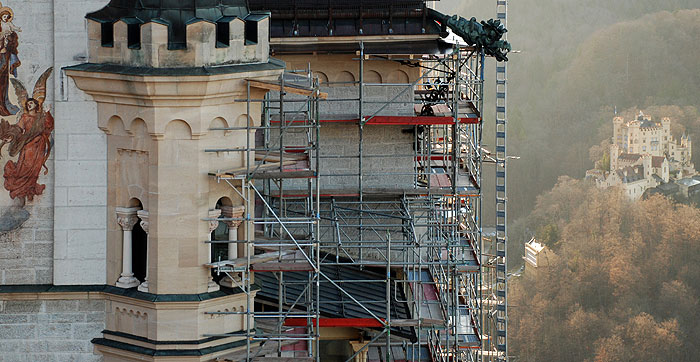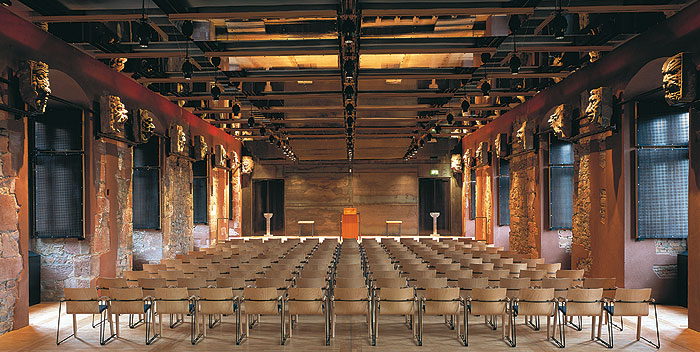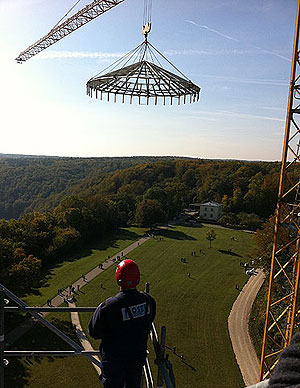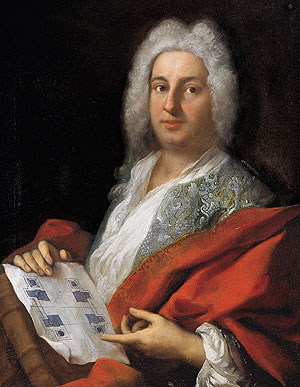About us > Building department
Information:
Main information:
Introducing the building department
Contact persons at the building department
The building department has a central function within the Bavarian Administration of Palaces, Gardens and Lakes. Its construction and preservation activities always overlap with the activities of the other departments. It is thus involved in all the general tasks and projects of the Bavarian Palace Administration and works closely with the property department(president's department), the museum department, the garden department and the conservation department.

The building department is responsible throughout Bavaria for the continuous repair and maintenance of all the property – nearly all of which is listed – and deals with all architectural, technical and conservation matters. The aim is to preserve for posterity the state property and cultural heritage entrusted to the Bavarian Palace Administration "while retaining its cultural authenticity" as stated in an official ordinance.
It is always a major challenge not only to preserve the historic substance and interiors of important palaces, residences and castles in their entirety in accordance with the principles of conservation but at the same time also to adapt them as far as possible to modern technical requirements, safety standards and the demands of the users. Many different construction, renovation, the infrastructure and safety aspects frequently have to be reconciled. Restoration tasks are also often extremely difficult and highly complex.

Another important task involves equipping historic buildings with new museum and function rooms or new visitor facilities such as museum shops, information centres and cafeterias, to meet the present-day requirements of visitors and make the places of interest more accessible to them.
The continuous maintenance and all the building or restoration measures are carried out for the building department by the Bavarian State Building Authorities, which receive around 30 planning and building orders every year and are supervised by the department. This procedure has been in force since 1924 and is designed in particular to ensure full compliance with conservation principles.
The historic buildings are maintained and restored according to the aims and generally acknowledged principles of the preservation of state monuments. The Bavarian Palace Administration has a long tradition and considerable experience of dealing with historic building substance and interiors and for this reason was also accorded special status under conservation law in 1975.

Each of the five section heads of the building department is responsible for the buildings and conservation of several of the 46 properties in Bavaria, as well as for certain specialized areas. They are supported internally by, among others, a planning group (using CAD), technical experts, the budget section and a special conservation section, which is also responsible for scientific building research and the documentation of building projects and has a comprehensive building archive.
The continuous maintenance of the listed palaces, castles and residences of the Bavarian Palace Administration throughout Bavaria is extremely labour-intensive and expensive because of the special conditions under which it is carried out. The total spent on building every year (30-40 million euros) is roughly half of the total annual expenditure of the Bavarian Palace Administration. There are always 40 large building or restoration projects as well as various minor projects with a total volume of around 400 million euros in progress at any one time, at various stages between preliminary plans and completion. Most of them are projects of several years' duration.

History
The forerunner of the present building department of the Bavarian Administration of Palaces, Gardens and Lakes in the 17th and 18th centuries – at the time of the Bavarian electors – was the electoral court building office. It was headed by famous architects such as Henrico Zuccalli, Joseph Effner and François Cuvilliés the Elder.
In 1804, under Elector Max IV Joseph who in 1806 became the first Bavarian king, Max I Joseph, the court building office under Andreas Gärtner became the "court building directorship", responsible to the Finance Ministry as a department of the newly founded "stewarding division". This, under the new names, is still the arrangement today.

Facebook Instagram YouTube